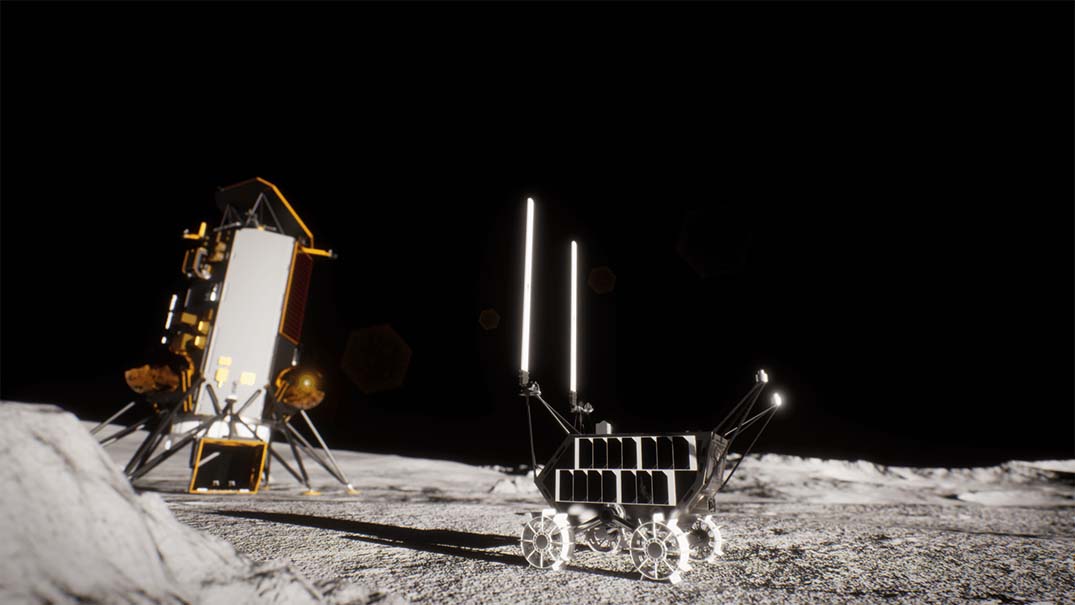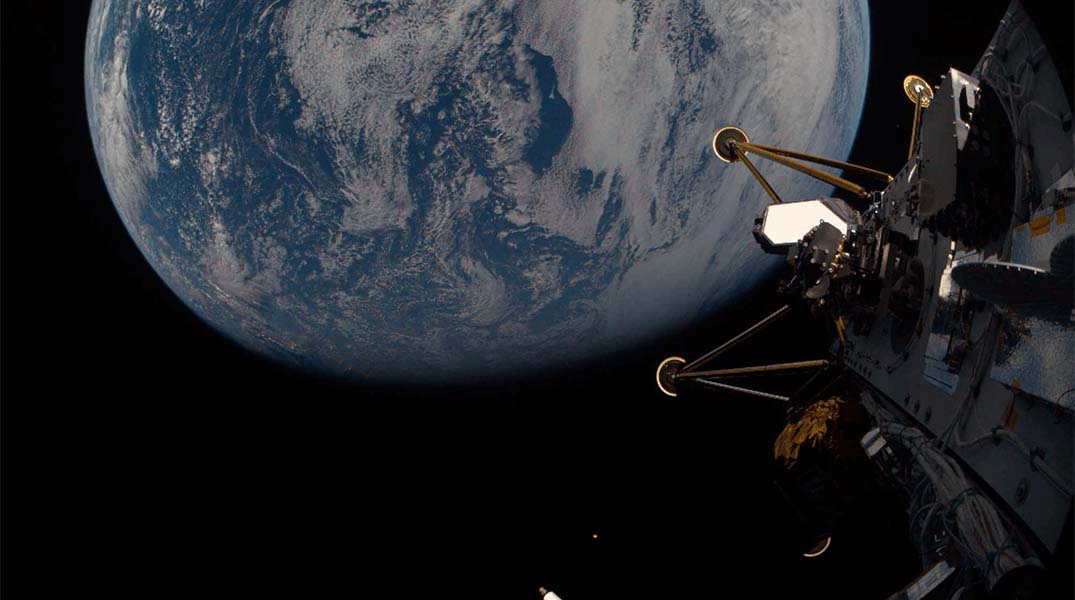Nokia plans to set up a cellular communications network on the Moon.
This is one of the outcomes that the new Commercial Lunar Payload Services (CLPS) mission hopes to accomplish.
Carrying NASA instruments as part of the agency’s CLPS initiative and Artemis campaign, Intuitive Machines’ IM-2 mission launched on 26 February aboard a SpaceX Falcon 9 rocket from the Kennedy Space Centre in Florida.
The Intuitive Machines lunar lander is scheduled to touch down on Thursday 6 March in Mons Mouton, a plateau in the Moon’s South Pole.
Janet Petro, acting administrator of NASA, says. “These science and technology demonstrations are more than payloads – they represent the foundation for future explorers who will live and work on the Moon. By partnering with American industry, we are driving innovation, strengthening our leadership in space, and preparing for sending humans farther into the solar system, including Mars.”
Once on the Moon, the NASA CLPS investigations will aim to measure the potential presence of volatiles or gases from lunar soil – one of the first on-site demonstrations of resource use on the Moon. In addition, a passive Laser Retroreflector Array on the top deck of the lander will bounce laser light back at any future orbiting or incoming spacecraft to give them a permanent reference point on the lunar surface.
Other technology instruments on this delivery will demonstrate a robust surface communications system and deploy a propulsive drone designed to hop across the lunar surface.
NASA’s Lunar Trailblazer spacecraft, which launched as a rideshare with the IM-2 mission, also began its journey to lunar orbit, where it will map the distribution of the different forms of water on the Moon.
Lunar Trailblazer will discover where the Moon’s water is, what form it is in, and how it changes over time. Observations gathered during its two-year prime mission will contribute to the understanding of water cycles on airless bodies throughout the solar system while also supporting future human and robotic missions to the Moon by identifying where water is located.
NASA’s Artemis campaign includes conducting more science to better understand planetary processes and evolution, to search for evidence of water and other resources, and support long-term, sustainable human exploration.
The NASA science and technology instruments that launched aboard the IM-2 mission are:
- Polar Resources Ice Mining Experiment-1 (Prime-1): This experiment will explore the Moon’s subsurface and analyse where lunar resources may reside. The experiment’s two key instruments will demonstrate the ability to extract and analyze lunar soil to detect volatile chemical compounds that turn into gas. The two instruments will work in tandem: The Regolith and Ice Drill for Exploring New Terrains will drill into the Moon’s surface to collect samples, while the Mass Spectrometer Observing Lunar Operations will analyse these samples to determine the gas composition released across the sampling depth. The Prime-1 technology will provide valuable data to better understand the Moon’s surface and how to work with and on it.
- Laser Retroreflector Array (LRA): This collection of eight retroreflectors will enable precision laser ranging, which is a measurement of the distance between the orbiting or landing spacecraft to the reflector on the lander. The LRA is a passive optical instrument and will function as a permanent location marker on the Moon for decades to come.
- Micro Nova Hopper: Funded by NASA’s Space Technology Mission Directorate Tipping Point initiative, Intuitive Machines’ Micro Nova hopper, Grace, is designed to enable high-resolution surveying of the lunar surface under its flight path. This autonomous propulsive drone aims to deploy to the surface and hop into a nearby crater to survey the lunar surface and send science data back to the lander. It’s designed to hop in and out of a permanently shadowed region, providing a first look into undiscovered regions that may provide critical information to sustain a human presence on the Moon.

Artist rendering of Nokia’s Lunar Surface Communication System (LSCS), which aims to demonstrate cellular-based communications on the lunar surface.
Credit: Intuitive Machines
- Nokia Lunar Surface Communications System (LSCS): Also developed with funding from NASA’s Tipping Point initiative, Nokia’s LSCS 4G/LTE communications system will demonstrate cellular communications between the Intuitive Machines lander, a Lunar Outpost rover, and the Micro Nova hopper. Engineered to transmit high-definition video, command-and-control messages, and sensor and telemetry data, the LSCS aims to demonstrate an ultra-compact advanced communication solution for future infrastructure on the Moon and beyond.
Featured picture: Intuitive Machines’ NOVA-C lunar lander captures a selfie with Earth in the background shortly after separation.
Credit: Intuitive Machines

